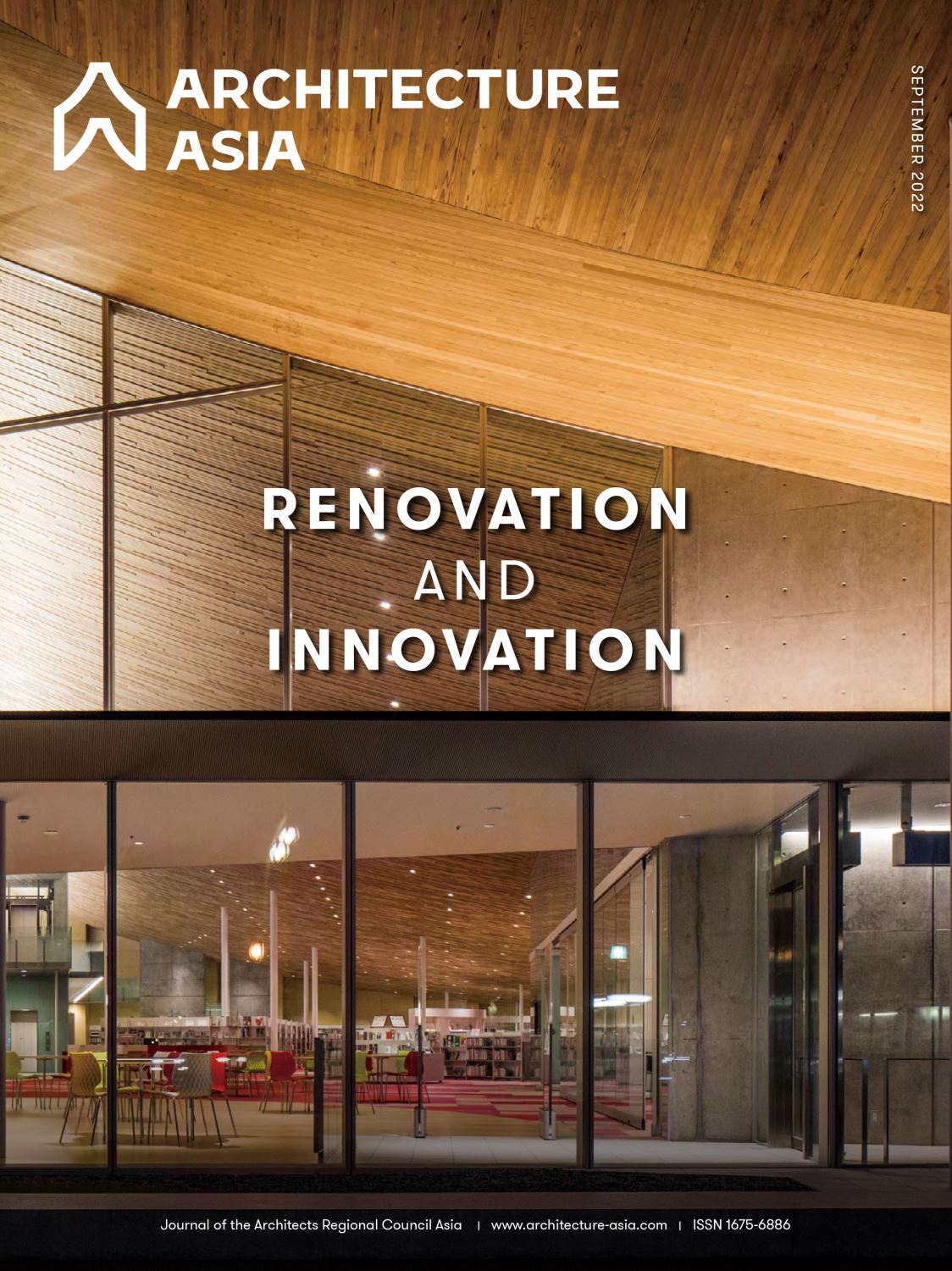
Editorial
The long-standing and enduring historical and cultural stamps of Asian countries form a characteristic architecture heritage and shape a distinctive historical heritage in the old urban quarters of these countries. Taking the professional responsibility to respect history as they face the future, and with the understanding of indigenous cultures in Asian countries, contemporary Asian architects use different approaches to explore new methods of combining historic architecture and blocks with cities brimming with modern life. In their practice and exploration of renovation, the usually contradictory notions projected by catchwords like "renovation and regeneration," "materials and spirit," "hardware and software," and "tradition and modern" become synonyms. These words and the sentiments they attach continually evolve and combine under various environmental, cultural, and technological conditions, forming a future-oriented innovation of ideas and methods. In this issue, enlightening discussions on the issue's theme of Renovation and Innovation unfold in three academic articles and eleven design projects.
In the three academic essays, the discussion emerges from three aspects: historic building conservation, the revitalization process of these historic buildings, and the regeneration of historic old urban quarters. In "The Concept of Sharing and Regeneration in Contemporary Architecture in Pakistan: A Case Study of Har Sukh Mansion," Amna Iqbal analyzes the conservation of Har Sukh Mansion in Pakistan, including environmental, social, and cultural sustainability issues, arguing that the interconnection of renovation, design, as well as cultural and environmental studies should be emphasized in the renovation and regeneration of historic architecture. In the second essay "Beyond (Designing) the Place," based on the revitalization of the former Haw Par Mansion and Tiger Balm Garden (the property's private garden) in Hong Kong into Haw Par Music, Wu Tsan Sum Roger explains that the revitalization of a building encompasses not only the renovation of the "hardware" of that building, but also the inheritance and innovation of its "software" programs. The author explains this concept in detail on pages 13 to 24. The final essay in the lineup discusses a revitalization and regeneration process that extends beyond a single building to a whole neighborhood filled with heritage architecture and historical heritage. Taking the old urban quarter in Yingping District in Xiamen, China, as an example, the authors discuss— through the multiple dimensions of the protection of local culture, improvement of environment, creation of public space, and improvement of infrastructure—sharing and regeneration strategies for old urban quarters in Asia.
On the practice side, architectural practices Neri&Hu, HGAA, and Nikken Sekkei share how the traditional housing prototype combines with the modern lifestyle to create a restrained and serene space atmosphere. A wholly different approach is revealed by IROJE KHM Architects, who interpret a rich and lively contemporary settlement scene with exaggerated architecture. OPEN Architecture and Tongji Architectural Design explore two completely different solutions to the merging of architecture and landscape with the natural environment in three eco-positive, remarkable projects. HAS Design and Research addresses the twofold problem of space and society by exploring innovative materials, at the same time attaching cultural significance to them. TSC Architects and Tanzo Space Design Office create bright and healthy atmospheres through materials and space in the hope of changing the depressing and constrained stereotypes of certain familiar architecture types, like clinics/hospitals.
In these engaging projects, the design practices featured in this issue provide unique responses to the idea "traditional innovation and innovational tradition."




 loading......
loading......